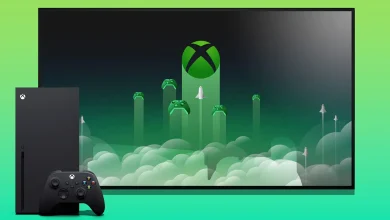The Evolution of Gaming: How Technology is Transforming the Gaming Landscape
How Technology is Transforming the Gaming Landscape

Introduction:
Cloud gaming has emerged as a transformative technology that is reshaping the gaming landscape in profound ways. By leveraging the power of cloud computing, streaming technology, and subscription-based models, cloud gaming platforms are democratizing access to gaming experiences, fostering innovation in game development, and transforming the way games are played, distributed, and monetized. In this article, we explore the impact of cloud gaming on the gaming landscape, discussing its implications for players, developers, and the industry as a whole.
Accessibility and Inclusivity:
One of the most significant impacts of cloud gaming is its ability to make gaming more accessible and inclusive. By eliminating the need for expensive gaming hardware and physical installations, cloud gaming platforms enable players of all backgrounds and budgets to enjoy high-quality gaming experiences on a wide range of devices, including smartphones, tablets, laptops, and smart TVs. This accessibility has opened up gaming to new audiences, including casual players, mobile gamers, and those with limited gaming budgets, fostering a more diverse and inclusive gaming community.
Democratizing Game Distribution:
Cloud gaming platforms have democratized game distribution by providing developers with new avenues to reach players directly. Instead of relying on traditional retail channels or digital storefronts, developers can publish their games on cloud gaming platforms and reach a global audience instantly. This democratization of game distribution has empowered indie developers and small studios to compete with larger publishers, leveling the playing field and fostering a more diverse and innovative gaming ecosystem.
Fostering Innovation in Game Development:
Cloud gaming has sparked innovation in game development, with developers creating new experiences optimized for streaming and cross-platform play. By leveraging the scalability and flexibility of cloud computing, developers can create immersive and interactive gaming experiences that push the boundaries of what is possible. From dynamic open worlds and procedural content generation to AI-driven NPCs and adaptive difficulty systems, cloud gaming has enabled developers to experiment with new gameplay mechanics, storytelling techniques, and monetization models, driving innovation and creativity in the industry.
Redefining Monetization Models:
Cloud gaming platforms have redefined monetization models in the gaming industry, moving away from traditional retail sales and towards subscription-based and freemium models. Subscription-based cloud gaming services like Xbox Game Pass Ultimate and PlayStation Now offer players access to a vast library of games for a fixed monthly fee, while free-to-play cloud gaming platforms like NVIDIA GeForce Now and Amazon Luna allow players to access and play games for free, supported by ads or in-game purchases. These new monetization models provide developers with recurring revenue streams and enable players to explore a wide range of games without committing to upfront costs, creating a win-win situation for both parties.
Globalization of Gaming:
Cloud gaming has accelerated the globalization of gaming, enabling players from around the world to connect and play together in real-time. By removing geographic barriers and enabling cross-platform play, cloud gaming platforms have created a truly global gaming community, where players can compete, collaborate, and socialize regardless of their location or device. This globalization of gaming has enriched the gaming experience, exposing players to new cultures, perspectives, and gameplay styles, and fostering a sense of unity and camaraderie among players worldwide.
Conclusion:
Cloud gaming is revolutionizing the gaming landscape, democratizing access to gaming experiences, fostering innovation in game development, and redefining monetization models. By making gaming more accessible, inclusive, and global, cloud gaming platforms are shaping the future of interactive entertainment and paving the way for a new era of gaming that is more diverse, immersive, and interconnected than ever before. As technology continues to evolve and cloud gaming platforms expand their reach, the impact of cloud gaming on the gaming landscape will only continue to grow, driving further innovation and transformation in the industry.
Gaming Accessibility and Inclusivity: Breaking Barriers, Building Communities
Introduction:
Gaming has evolved from a niche hobby into a mainstream form of entertainment enjoyed by millions worldwide. However, despite its widespread popularity, gaming has historically faced challenges in terms of accessibility and inclusivity, with barriers preventing certain individuals from fully participating in the gaming experience. In recent years, there has been a growing awareness of these issues, leading to concerted efforts by developers, advocates, and the gaming community to promote accessibility and inclusivity in gaming. This article explores the importance of gaming accessibility and inclusivity, the challenges faced by diverse communities, and the initiatives driving positive change in the gaming industry.
Understanding Accessibility in Gaming:
Accessibility in gaming refers to the design and implementation of features and functionalities that ensure games can be enjoyed by individuals with disabilities or other limitations. This includes considerations such as customizable controls, visual and auditory cues, subtitles and captions, colorblind modes, and alternative input methods. By making games more accessible, developers can ensure that players of all abilities can enjoy and participate in gaming experiences on an equal footing.
Challenges Faced by Diverse Communities:
Several marginalized communities face unique challenges when it comes to gaming accessibility and inclusivity. Individuals with disabilities, including physical, sensory, and cognitive impairments, may encounter barriers such as inaccessible controls, fast-paced gameplay, and lack of representation in gaming content. Likewise, individuals from underrepresented backgrounds, including women, people of color, LGBTQ+ individuals, and neurodiverse individuals, may face discrimination, harassment, and exclusion in gaming communities and content. These challenges can have a significant impact on the gaming experience and contribute to feelings of alienation and disengagement among diverse players.
Initiatives Promoting Accessibility and Inclusivity:
In recent years, there has been a growing recognition of the importance of promoting accessibility and inclusivity in gaming. Developers, advocacy groups, and community organizations have launched initiatives aimed at addressing these issues and creating a more inclusive gaming environment. Some of the key initiatives include:
Inclusive Game Design:
Developers are increasingly incorporating accessibility features into their games, such as customizable controls, scalable difficulty levels, and inclusive character customization options. By prioritizing inclusive game design principles, developers can ensure that their games are accessible to players of all abilities and backgrounds.
Accessibility Guidelines and Standards:
Organizations like the Game Accessibility Guidelines (GAAG) and the International Game Developers Association (IGDA) have developed guidelines and best practices for creating accessible games. These guidelines provide developers with practical recommendations and resources for designing and implementing accessibility features in their games.
Community Advocacy and Support:
Advocacy groups and community organizations are working to raise awareness of accessibility and inclusivity issues in gaming and advocate for positive change. These groups provide support, resources, and community spaces for diverse players, fostering a sense of belonging and empowerment within the gaming community.
Industry Collaboration and Partnerships:
Industry stakeholders, including developers, publishers, hardware manufacturers, and platform holders, are collaborating to promote accessibility and inclusivity in gaming. By working together, these stakeholders can share best practices, develop innovative solutions, and drive systemic change across the gaming ecosystem.
Benefits of Gaming Accessibility and Inclusivity:
Promoting accessibility and inclusivity in gaming benefits not only marginalized communities but the gaming industry as a whole. By making games more accessible, developers can expand their player base, increase player engagement and retention, and foster a more diverse and vibrant gaming community. Additionally, accessible and inclusive games can provide enriching and empowering experiences for players of all abilities and backgrounds, promoting empathy, understanding, and social connection.
Conclusion:
Gaming accessibility and inclusivity are essential components of creating a welcoming and inclusive gaming environment where all players can participate, contribute, and thrive. By addressing the unique needs and challenges faced by diverse communities, developers, advocacy groups, and industry stakeholders can create a more inclusive and equitable gaming landscape that celebrates diversity and empowers players of all abilities and backgrounds. As the gaming industry continues to evolve, it is crucial to prioritize accessibility and inclusivity as fundamental principles that enrich the gaming experience for everyone.
Introduction: The gaming industry and its rapid evolution
The gaming industry has come a long way since its inception. From the early days of Pong and Tetris to the immersive and graphically stunning games we have today, technology has played a crucial role in shaping the evolution of gaming. As technology continues to advance at a rapid pace, it is transforming the gaming landscape in ways we could have never imagined.
The impact of technology on gaming
Technology has had a profound impact on gaming, revolutionizing every aspect of the industry. One of the biggest advancements has been the improvement in graphics and visuals. In the early days, games were pixelated and lacked detail, but now we have games that are so realistic, it’s hard to distinguish them from real life. This has been made possible by advancements in hardware and software, such as powerful GPUs and sophisticated game engines. Another area where technology has had a significant impact is in gameplay mechanics. The introduction of physics engines and artificial intelligence has made games more immersive and challenging. We now have games that simulate real-world physics, allowing players to experience realistic interactions and environments. AI-powered NPCs (non-playable characters) have also become more intelligent, providing a more dynamic and engaging gaming experience.
The rise of mobile gaming
Mobile gaming has exploded in popularity over the past decade, thanks to advancements in smartphone technology. With smartphones becoming more powerful and affordable, more people have access to high-quality games on the go. Mobile games have become a multi-billion-dollar industry, with a wide variety of genres and gameplay styles available. From casual puzzle games to complex multiplayer experiences, there is something for everyone.
Mobile gaming has also changed the way we play games. Touchscreen controls have become the norm, replacing traditional controllers or keyboards. This has allowed for more intuitive and accessible gameplay, making gaming more inclusive for a wider audience. Additionally, the portability of smartphones has made gaming a social activity, with multiplayer games and online communities thriving on mobile platforms.
Virtual reality and augmented reality in gaming
Virtual reality (VR) and augmented reality (AR) have been hailed as the future of gaming, offering immersive and interactive experiences like never before. VR technology allows players to enter a fully virtual world, where they can interact with their surroundings and experience games in a whole new way. From exploring fantasy realms to participating in adrenaline-pumping sports, VR has the potential to transport players to new dimensions. On the other hand, AR technology blends the real world with virtual elements, overlaying digital content onto the physical environment. This opens up a whole new realm of possibilities for gaming, with games that can be played in the real world. Imagine battling virtual creatures in your own backyard or solving puzzles on your kitchen table. AR has the potential to blur the lines between reality and fantasy, creating unique and engaging gaming experiences.
The role of cloud gaming in the future of gaming
Cloud gaming is a relatively new concept in the gaming industry, but it has the potential to revolutionize how we play games. With cloud gaming, players can stream games directly to their devices without the need for expensive hardware. The games are run on powerful servers, and the video and audio are streamed to the player’s device in real-time. This means that players can play high-quality, graphically demanding games on devices that would otherwise not be capable of running them. Cloud gaming also offers the advantage of instant access to a vast library of games. Instead of having to download and install games, players can simply stream them on-demand. This not only saves storage space but also eliminates the need for lengthy downloads and updates. Additionally, cloud gaming allows for seamless cross-platform play, as games can be accessed from any device with an internet connection.
The importance of streaming platforms in the gaming landscape
Streaming platforms have become an integral part of the gaming landscape, providing a way for players to share their gameplay with others and build communities. Platforms like Twitch and YouTube Gaming have skyrocketed in popularity, with millions of viewers tuning in to watch live streams and recorded gameplay videos. These platforms have not only given rise to a new form of entertainment but have also created opportunities for gamers to become influencers and content creators. Streaming platforms have also changed the way games are marketed and discovered. Through live streams and gameplay videos, players can get a firsthand look at a game before deciding to purchase it. This has shifted the focus from traditional advertising to word-of-mouth recommendations and genuine player experiences. Developers and publishers now have to consider the impact of streaming on their games, as positive or negative reviews can spread like wildfire and significantly impact sales.
The influence of social media on gaming
Social media has had a profound impact on gaming, transforming it into a social and interactive experience. Platforms like Facebook, Twitter, and Instagram have become a hub for gamers to connect, share their experiences, and discover new games. Social media has also allowed for the rise of gaming communities and fan groups, where players can discuss their favorite games, share tips and strategies, and organize multiplayer sessions. In addition to connecting gamers, social media has also become a powerful marketing tool for game developers and publishers. They can use platforms like Facebook ads and influencer partnerships to reach a wider audience and generate buzz for their games. Social media has also given rise to esports, with competitive gaming tournaments being broadcasted to millions of viewers online. The popularity of esports has grown exponentially, with professional players and teams now competing for huge prize pools and worldwide recognition.
The growth of eSports and its impact on the gaming industry
eSports, or competitive gaming, has seen explosive growth in recent years, becoming a billion-dollar industry in its own right. Professional gamers now compete in tournaments with huge prize pools, and millions of viewers tune in to watch the action unfold. eSports has brought gaming into the mainstream, with events being held in large stadiums and broadcasted on television networks.The rise of eSports has not only transformed gaming as a form of entertainment but has also created new career opportunities. Professional gamers, casters, coaches, and team managers are now viable career paths for those passionate about gaming. eSports has also paved the way for the development of specialized gaming equipment and infrastructure, as players strive for the competitive edge.
The future of gaming: emerging technologies and trends
As technology continues to advance, we can expect to see even more exciting developments in the world of gaming. Emerging technologies like artificial intelligence, blockchain, and 5G connectivity have the potential to revolutionize the gaming industry further. AI-powered NPCs will become even more intelligent and lifelike, creating more immersive and dynamic gaming experiences. Blockchain technology could revolutionize in-game economies and ownership, allowing players to truly own and trade virtual assets. And with the rollout of 5G networks, we can expect faster and more seamless online multiplayer experiences. In terms of trends, we can expect to see a continued convergence of gaming and entertainment. As games become more immersive and cinematic, they will blur the lines between traditional storytelling and interactive gameplay. We can also expect to see more cross-platform play, allowing players to seamlessly switch between devices and continue their gaming experiences. Additionally, the rise of cloud gaming and streaming platforms will continue to shape how games are played and experienced.
Conclusion: The exciting future of gaming and the endless possibilities
The evolution of gaming has been nothing short of remarkable, with technology driving innovation at every turn. From improved graphics and gameplay mechanics to the rise of mobile gaming, virtual reality, and augmented reality, the gaming landscape has transformed dramatically. Cloud gaming and streaming platforms have changed how games are accessed and shared, while social media and esports have turned gaming into a global phenomenon. As we look to the future, emerging technologies and trends promise even more exciting possibilities for the gaming industry. The future of gaming is bright, and we can’t wait to see what comes next.
CTA:
Join us in exploring the future of gaming and stay up to date with the latest industry news and trends. Follow us on social media and subscribe to our newsletter for all the latest updates. Let’s play together!
Understanding Accessibility in Gaming: Bridging Gaps and Breaking Barriers
Introduction:
Gaming has become a ubiquitous form of entertainment, offering immersive experiences and virtual worlds to millions of players worldwide. However, not all players have equal access to these experiences. Accessibility in gaming refers to the design and implementation of features and functionalities that ensure games can be enjoyed by individuals with disabilities or other limitations. In this article, we delve into the concept of accessibility in gaming, examining its importance, key components, challenges, and the ongoing efforts to promote inclusivity within the gaming community.
Importance of Accessibility in Gaming:
Accessibility in gaming is about ensuring that everyone, regardless of ability, can fully participate in and enjoy gaming experiences. It is a fundamental aspect of creating inclusive and equitable gaming environments where all players can engage in meaningful play. By prioritizing accessibility, developers can reach a broader audience, increase player engagement, and foster a more diverse and vibrant gaming community. Moreover, accessibility in gaming is not just about compliance with regulations; it is about empathy, understanding, and respect for the diverse needs and experiences of players.
Key Components of Accessibility in Gaming:
Accessibility in gaming encompasses a wide range of features and functionalities designed to accommodate different abilities and limitations. Some key components of accessibility in gaming include:
Customizable Controls:
Allowing players to customize control schemes, remap buttons, and adjust sensitivity settings to suit their preferences and abilities.
Visual Accessibility:
Providing options for adjustable text size, high-contrast interfaces, colorblind modes, and visual cues to accommodate players with visual impairments.
Auditory Accessibility:
Offering subtitles and captions, adjustable audio settings, visual sound indicators, and alternative audio cues for players with hearing impairments.
Motor Accessibility:
Supporting alternative input methods, such as touch controls, motion controls, and voice commands, for players with mobility impairments.
Cognitive Accessibility:
Implementing scalable difficulty levels, clear tutorials, intuitive UI design, and in-game assistance features to support players with cognitive impairments.
Challenges in Achieving Accessibility:
Despite the importance of accessibility in gaming, there are several challenges that developers and players face in achieving inclusive gaming experiences. Some common challenges include:
Awareness and Education:
Many developers and players may lack awareness and understanding of accessibility issues in gaming, leading to a lack of prioritization and investment in accessibility features.
Technical Limitations:
Implementing accessibility features in games can be technically challenging, especially for small indie studios or developers working with limited resources and budgets.
Design Trade-offs:
Balancing accessibility with other design considerations, such as gameplay mechanics, aesthetics, and performance, can be a complex process that requires careful consideration and trade-offs.
Testing and Feedback:
Ensuring the effectiveness and usability of accessibility features requires thorough testing and feedback from players with diverse abilities and perspectives, which may be challenging to obtain.
Efforts to Promote Accessibility in Gaming:
Despite these challenges, there has been a growing recognition of the importance of accessibility in gaming, leading to increased efforts to promote inclusivity within the gaming community. Some key initiatives include:
Accessibility Guidelines and Standards:
Organizations like the Game Accessibility Guidelines (GAAG) and the International Game Developers Association (IGDA) have developed guidelines and best practices for creating accessible games, providing developers with practical recommendations and resources.
Community Advocacy and Support:
Advocacy groups and community organizations are working to raise awareness of accessibility issues in gaming, provide support and resources for developers, and create inclusive spaces for players with disabilities.
Industry Collaboration and Partnerships:
Industry stakeholders, including developers, publishers, hardware manufacturers, and platform holders, are collaborating to promote accessibility in gaming, share best practices, and drive systemic change across the gaming ecosystem.
Conclusion:
Accessibility in gaming is a vital aspect of creating inclusive and equitable gaming environments where all players can participate and thrive. By prioritizing accessibility features and initiatives, developers, advocacy groups, and industry stakeholders can create a more inclusive and welcoming gaming landscape that celebrates diversity and empowers players of all abilities and backgrounds. As the gaming industry continues to evolve, it is essential to prioritize accessibility as a core principle that enriches the gaming experience for everyone.











